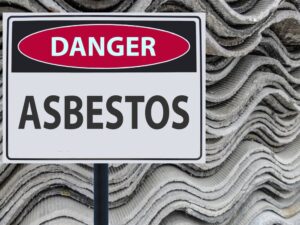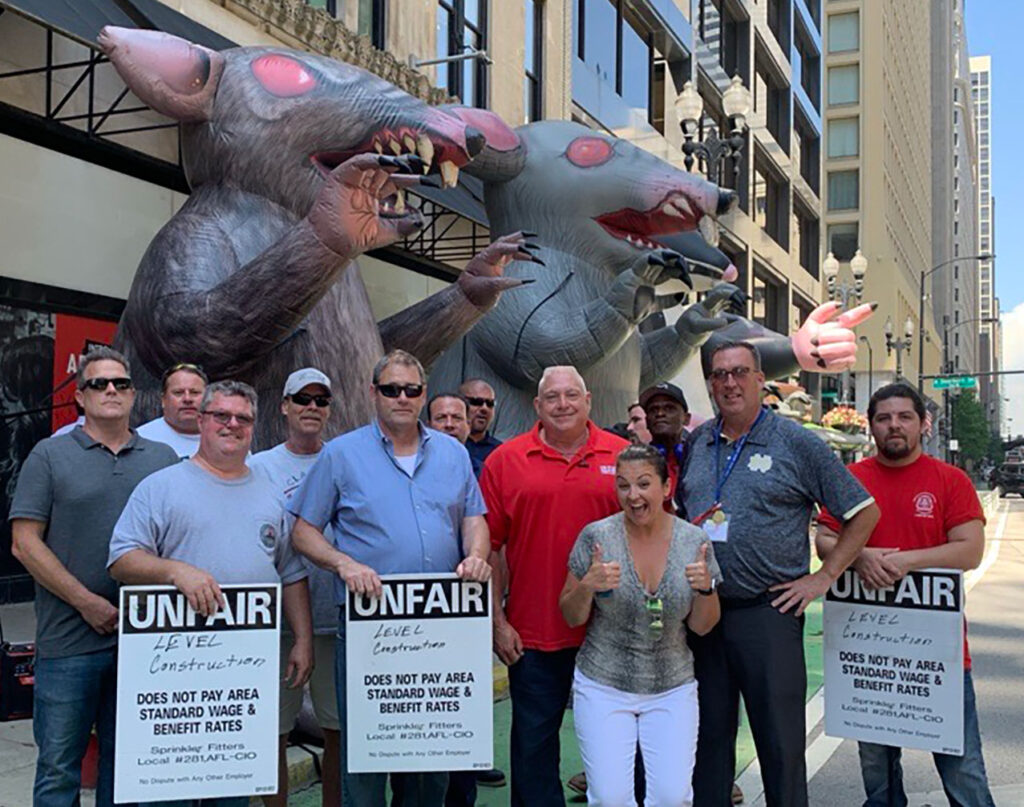The United States Environmental Protection Agency (EPA) has taken a major step toward ensuring public health on March 28, 2024. Through the Toxic Substances Control Act (TSCA), they issued a final rule designed to protect people against chrysotile asbestos. This historic regulation marks an important milestone in the fight against asbestos-related diseases and environmental hazards.
Background of Asbestos and How the EPA Has Approached Its Use
Asbestos is a group of naturally occurring fibrous minerals used widely across many industries for their heat resistance and durability. However, due to its severe health effects, asbestos has increasingly come under scrutiny and restrictions.
Chrysotile asbestos, also known as white asbestos, happens to be the most commonly used type of asbestos worldwide and is still being imported, processed, or distributed in the US.
Almost eight years were spent working on the EPA ban. It involved different stakeholders, such as government agencies, industry representatives, or organizations such as ADAO (Asbestos Disease Awareness Organization).
The aim was to address the “unreasonable risk of injury to health” associated with certain conditions of use of (COUs) for chrysotile asbestos according to the Toxic Substances Control Act, or TSCA.
Current Concerns – Even with the Imposed Ban

However, the ban does not address certain concerns, such as the following:
- Non-asbestos technology is now available to complete the transition sooner for a 12-year phase-out plan to stop using asbestos in the manufacturing environment.
- The ban still permits thousands of asbestos-containing gaskets to remain in use in places such as chemical plants, pipelines, and refineries, thereby exposing the workforce to the substance.
- It does not provide protections for do-it-yourselfers and mechanics exposed to asbestos when they repair or service autos that contain brakes, linings, and other friction parts made with asbestos.
- The current EPA regulation does not address the release of asbestos into the soil, water, or air. Nor does it cover on- and off-site asbestos-containing waste disposal.
As a result, the current ban will not cause asbestos to go away overnight. We may still have to deal with its impact until the end of the current century.
Health Risks and Rationale
The decision by the EPA to regulate chrysotile asbestos was based on vast scientific evidence – evidence that proves the dangers of exposure. There are several chronic illnesses caused by inhaling these fibers, including:
- Mesothelioma: This cancer may take the form of a tumor in the mesothelium, or the tissue that protects and lines the organs of the stomach, heart, lungs, and testes. It may also develop along this lining. Over time, it may progress and spread to nearby tissues and organs or other body parts.
- Lung Cancer: Those who smoke while exposed stand a higher chance than non-smokers of developing the disease, although both groups face serious risks.
- Ovarian Cancer: Research shows increased rates among women who had contact with asbestos through work settings – mainly where there were products made from it, like insulation materials. It may also result from using baby powder made with talc, extracted near rocks containing asbestos.
- Laryngeal Cancer: The risk of this disease increases with exposure to asbestos dust or fibers for long periods, especially if combined with alcohol abuse and smoking.
- Asbestosis: This chronic lung disease is characterized by scarring of the lung tissue, which can result in breathing difficulties over time.
These health risks, coupled with a latency period between exposure diagnosis, which can even span up to fifty years, show why banning the substance is of paramount importance.
Scope of the Regulation
The new EPA regulation ban focuses only on chrysotile asbestos and deals with six specific conditions of use (COUs). It does not amount to a complete ban against any form or every possible application of asbestos.
Manufacturing, importing, processing, and distributing for the commercial use of chrysotile asbestos is strictly prohibited in relation to these industrial applications:
- Chrysotile asbestos diaphragms used during chloralkali production;
- Chrysotile asbestos-containing sheet gaskets employed within chemical manufacturing facilities;
- Chrysotile asbestos-containing brake blocks used throughout oil drilling operations;
- After-market automotive brakes/linings made from chrysotile-containing materials;
- Other vehicle friction products that may contain some amounts of chrysolite as well as other types thereof and
- Miscellaneous gaskets made out of different kinds of asbestos, including those containing white-colored fibrous crystals called chrysolites.
Each of these uses has been found to pose an unacceptable danger to human beings and, therefore, requires government intervention through regulation.
Timeline of Execution and Industry Influence
The EPA has established a phase-out approach for implementing its policies to accommodate affected industries. The timetable varies depending on the application and industry:
For example, in the chloralkali sector, which uses chrysotile asbestos as diaphragms for chlorine and sodium hydroxide manufacturing, asbestos will be prohibited for manufacturing and importing these items. This implementation began on May 28, 2024.
However, using up what is left in stock may be permitted for several more years until complete elimination occurs – within 5 to 12 years from specific facilities.
The compliance deadlines differ among businesses or applications, such as automotive friction products and gaskets. Some restrictions take effect immediately, while others allow more extended time frames. This is because new technologies need to be researched and developed before they can be adopted.
During this period of discontinuation, companies that use chrysotile asbestos have to meet a strict certification outline. These requirements were made to ensure that asbestos removals are done safely and successfully over time.
Exceptions and Special Provisions
The EPA has included some allowances in its regulations concerning certain uses of chrysotile asbestos within specific industries, such as titanium dioxide production or nuclear material processing timescales.
The goal behind these exemptions is to balance the health risks against technological capabilities and operational capacities available within specialized sectors.
If there are no suitable substitutes available and an asbestos material is currently needed for critical reasons, a sudden prohibition might lead to a severe disruption in industrial processing. However, this type of exception also comes with stringent safety measures, including the need to actively seek alternative materials that are free of asbestos fibers.
Labor Safety Standards & Exposure Control

Workplace protection is a crucial element emphasized through the EPA’s regulation efforts. To this end, several provisions were included to safeguard workers from exposure during the phase-out periods. Some interim controls include:
- Monitoring levels of exposure: Regular tests have to be performed so that a company does not exceed the permissible limits for asbestos within the working environment.
- Personal protective gear (PPE): Workers who handle materials containing asbestos must wear the correct type of respiratory mask and other clothing designed to protect them against inhalation or skin contact with these hazardous substances.
- Education programs: Employees must undergo mandatory training on the hazards associated with asbestos and the proper procedures concerning its handling.
- Better asbestos control through specific engineering methods: Adopting techniques that suppress dust generation during operations, including good ventilation, are being put in place to reduce further risk.
These temporary measures are in line with existing OSHA regulations.
Disposal Techniques and Environmental Concerns
Another important area covered by the EPA’s rule relates to safe disposal practices of chrysotile fibers after being taken out of buildings or other structures used as insulating material.
The provisions guiding this process mirror those currently enforced by OSHA or relevant state agencies. Below are some critical points stipulated under disposal requirements:
- Securing waste properly: Asbestos-containing substances should be soaked wet and tightly packed inside containers without leaks before being transported off-site for treatment and final disposal.
- Marking containers clearly: Each container holding asbestos wastes must have suitable labels indicating the presence of dangerous fibers within it. It allows people to take the necessary precautions during handling or transportation.
- Specifying dumping grounds: Facilities authorized to receive this type of hazardous material must be authorized to land-fill asbestos.
- Recordkeeping and organization: Detailed accounts showing how asbestos disposals are made should be kept by companies that remove asbestos.
Cons and Continuing Problems Impacting Asbestos Control
The Environmental Protection Agency’s ban is a significant advancement in asbestos control. But it has its limitations. Here are some key things to note:
- Limited reach: Five out of six recognized types of asbestos fibers are not regulated by this legislation, except chrysotile, which alone accounts for all the carcinogenic fibers.
- Incomplete coverage: Of the 37 known uses of asbestos, only six are addressed by these regulations.
- Slow implementation: Some parts of the legislation will not take full effect for over a decade, meaning certain facilities can legally use chrysotile until then.
- The ban – not entirely comprehensive: Unlike many nations, the US still hasn’t outlawed all forms of asbestos.
While the current ban helps lessen the danger asbestos imposes, it still doesn’t completely fix the problem. Unfortunately, profits still matter to some manufacturers, and the mineral’s past use still impacts infrastructures currently in use. People may still have to file claims well into the later part of this century.
Review Your Asbestos Case with an Asbestos Attorney Now
Contact an asbestos attorney today for a case review and consultation about your claim.



